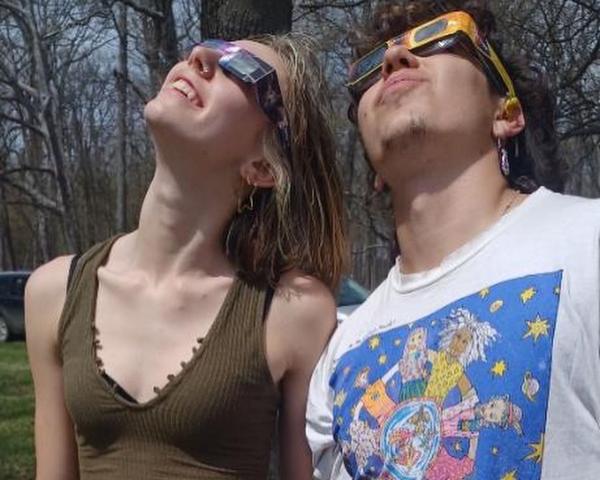Standing in the Shadow of the Moon
On April 8, 2024, a total solar eclipse moved across North America passing over the United States, Mexico, and Canada. The breathtaking site contributed to millions of people traveling to parts of the world where they could view the eclipse in its totality.
Packed in a car with her boyfriend and his family, seated in the back seat with his two younger siblings, Minneapolis College student Raven Holm drove 10 hours from Minneapolis to the small town of Effingham in Southern Illinois to view the eclipse.
Admittedly, Raven Holm noted her boyfriend’s mom was the most enthusiastic about seeing the eclipse while Holm was uncertain, experiencing some regrets during the long drive. Despite her hesitation, she wanted to go because the event lined up perfectly to what she was learning in her astronomy class spring semester. “The knowledge I garnered from class made the eclipse even more amazing because I felt like I knew what was going on,” said Holm who joined hundreds of onlookers in a state park. “I was even able to answer questions and share what I learned in class with people around me.”
“Watching the eclipse was a truly incredible experience,” said Holm, who noted she felt like she was in space while on earth, standing in the shadow of the moon. “It was like space was real for the first time and I felt incredibly small in comparison. The sky slowly grew dark until it reached totality and then the entire horizon appeared as though the sun was setting.” Holm shared how when the eclipse reached totality, there was a collective gasp from the crowd and dogs started barking. Three minutes later, it was over and they drove home in awe of their collective experience.
Holm is working toward her Associates of Arts degree at Minneapolis College with a goal of earning a four-year degree in social work after she spends time traveling and working odd jobs. “I want to be confident about my path going forward before I commit financially and emotionally to a four-year degree,” said Holm. “Minneapolis College was the perfect place to start my college education because the professors and atmosphere are a perfect fit. I’m definitely happy here.”
Holm wasn’t alone in her travels to view the eclipse. Numerous other Minneapolis College students, instructors, and staff also traveled to experience the celestial event. And if you missed it, mark your calendars for the next total eclipse that can be seen from the contiguous United States, August 23, 2044. States in its path include Montana and North and South Dakota, according to NASA.
